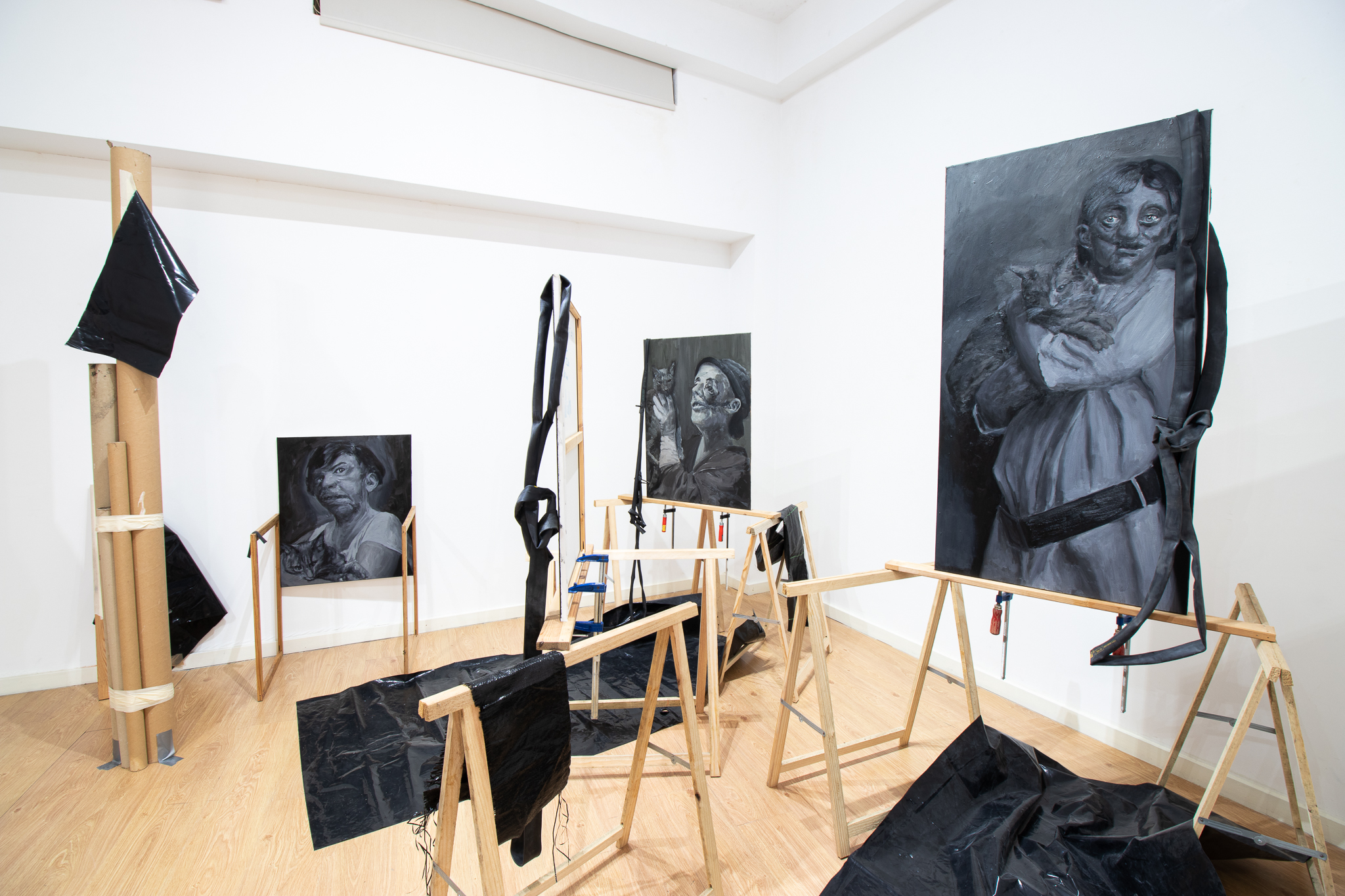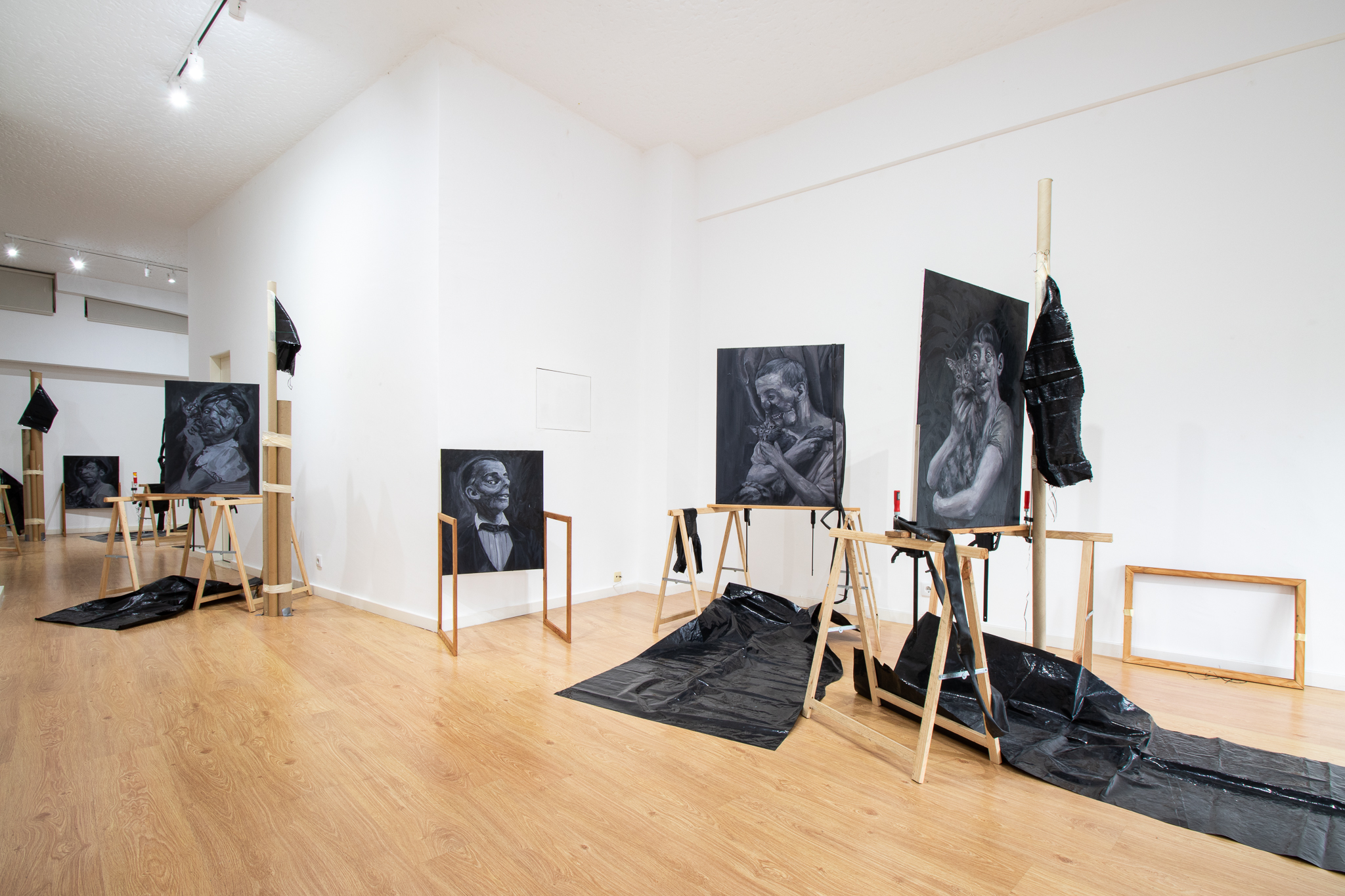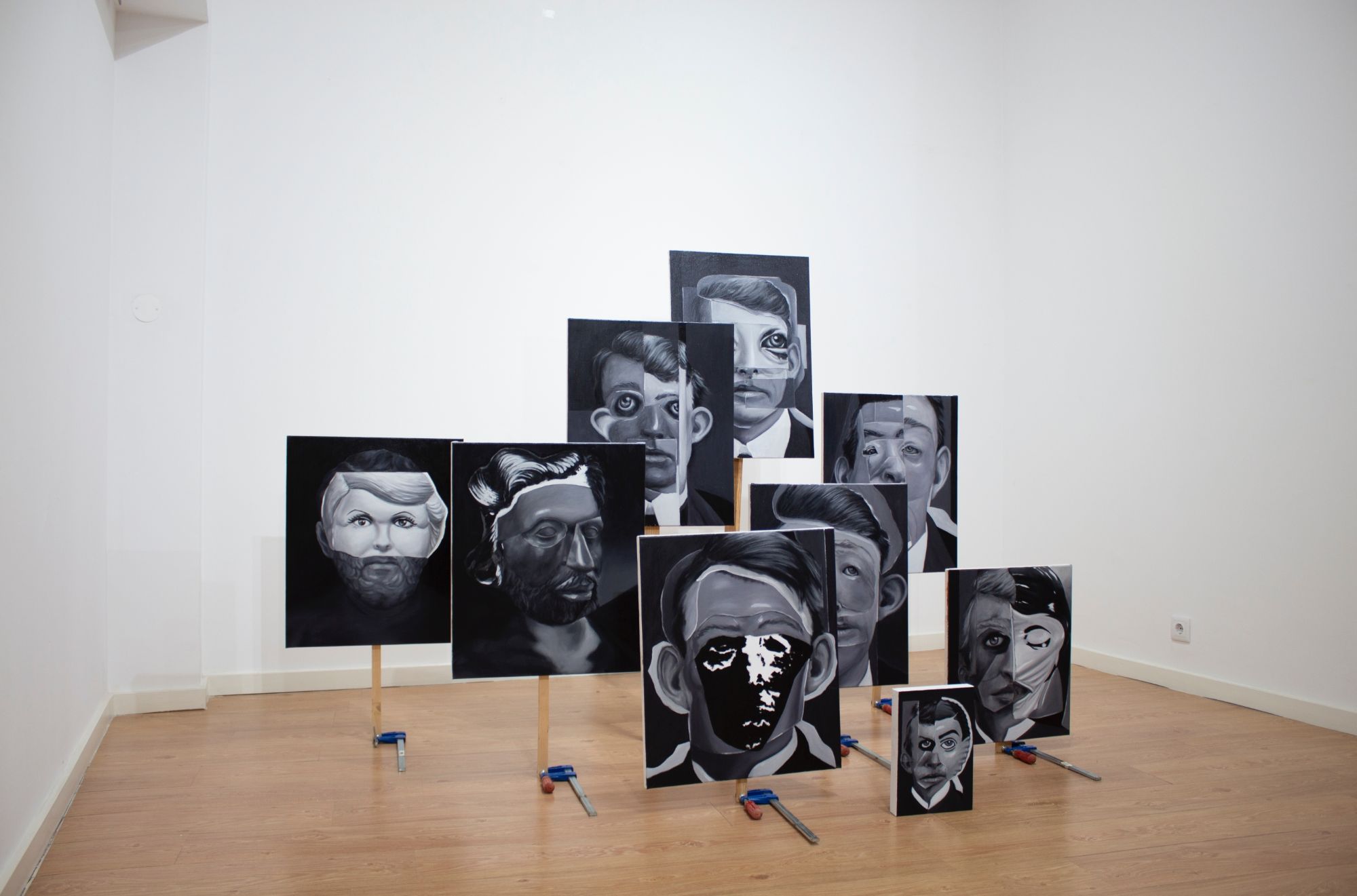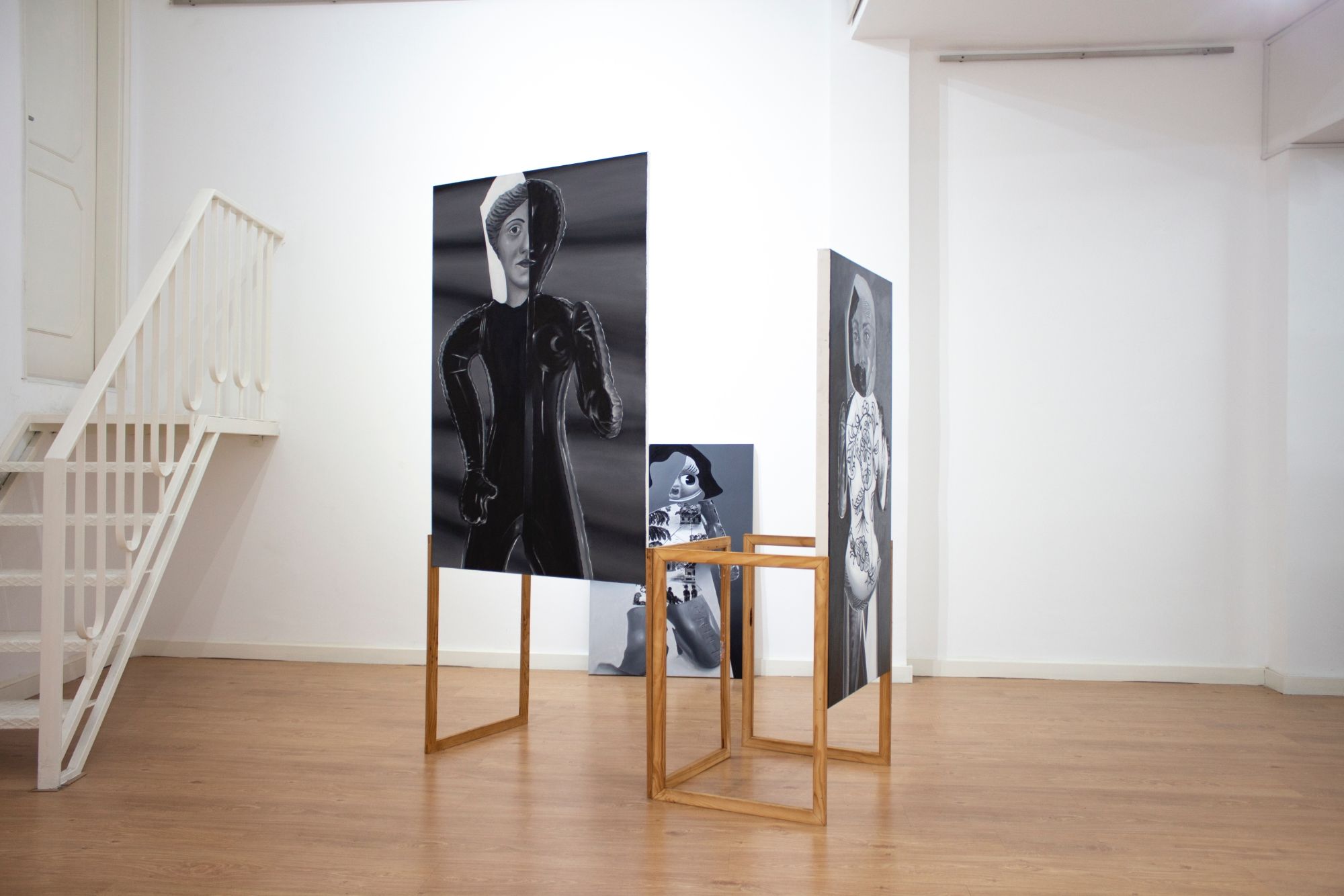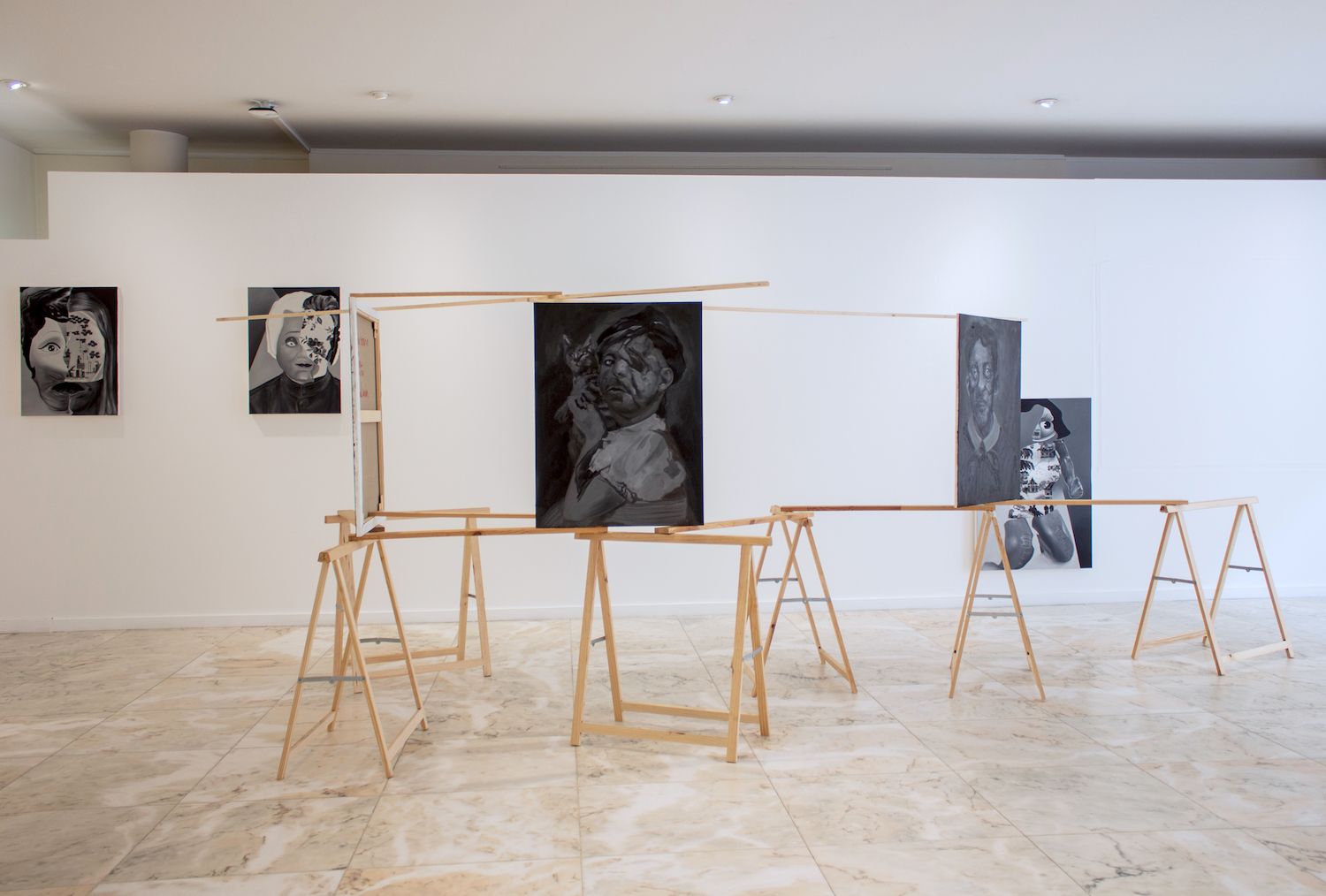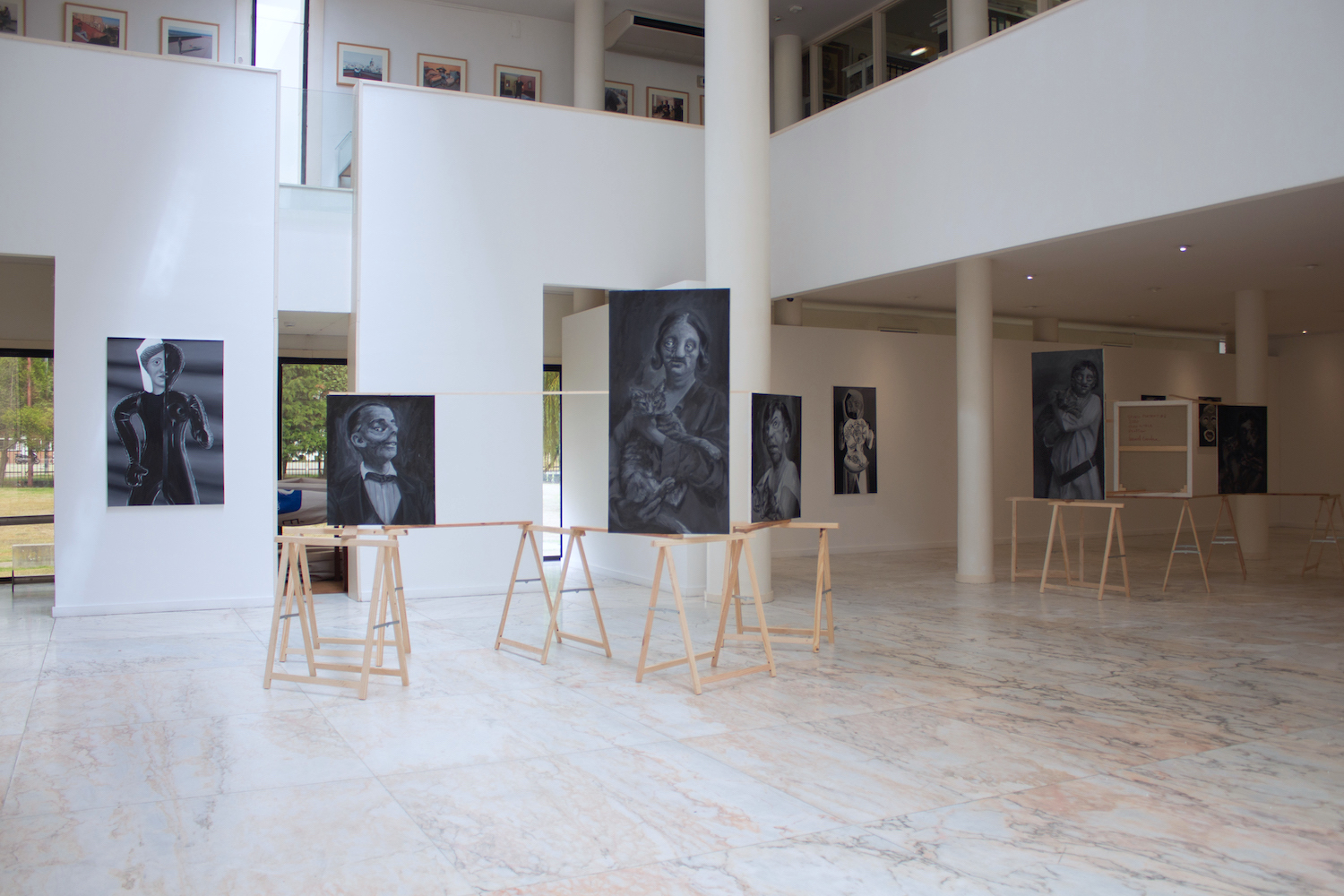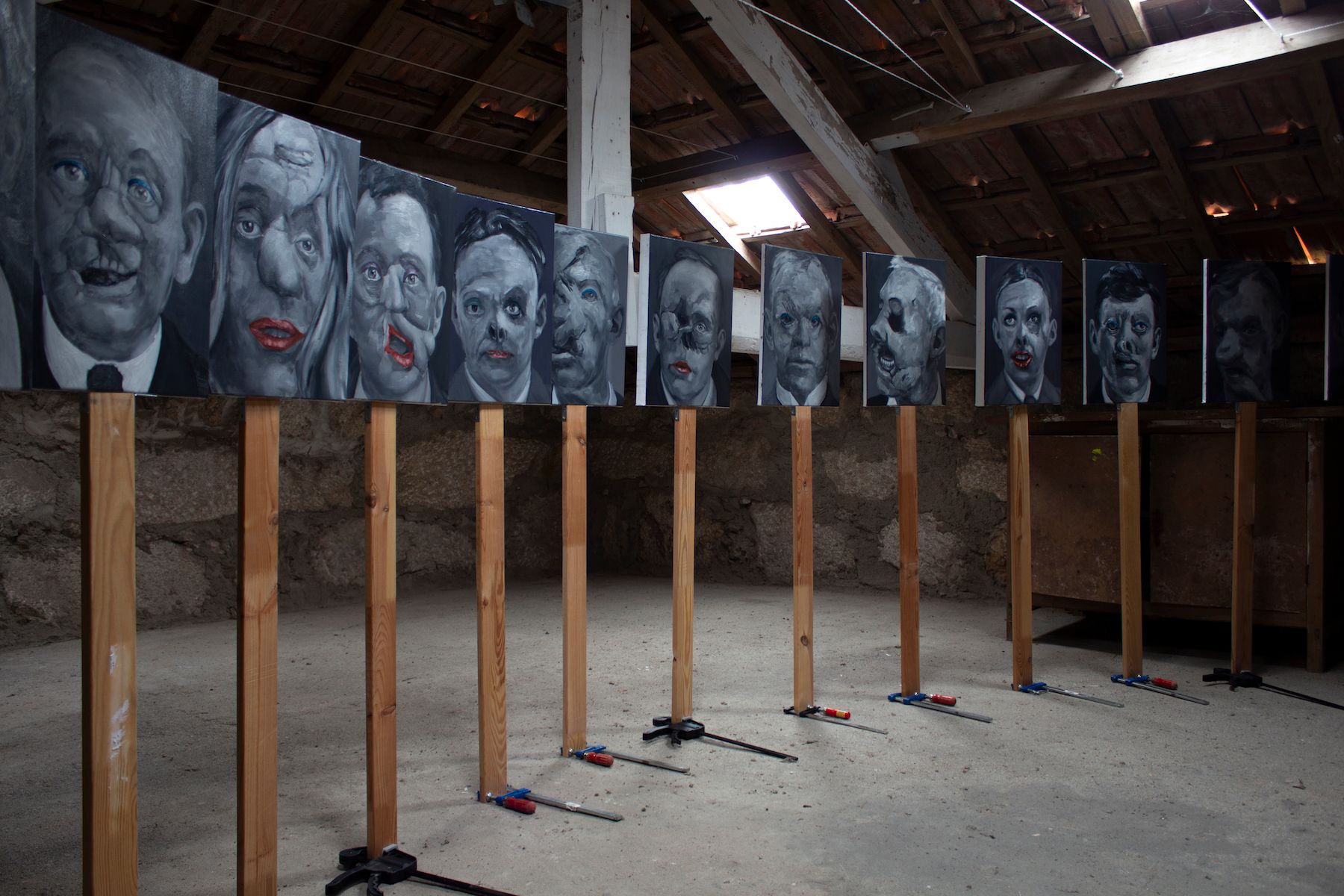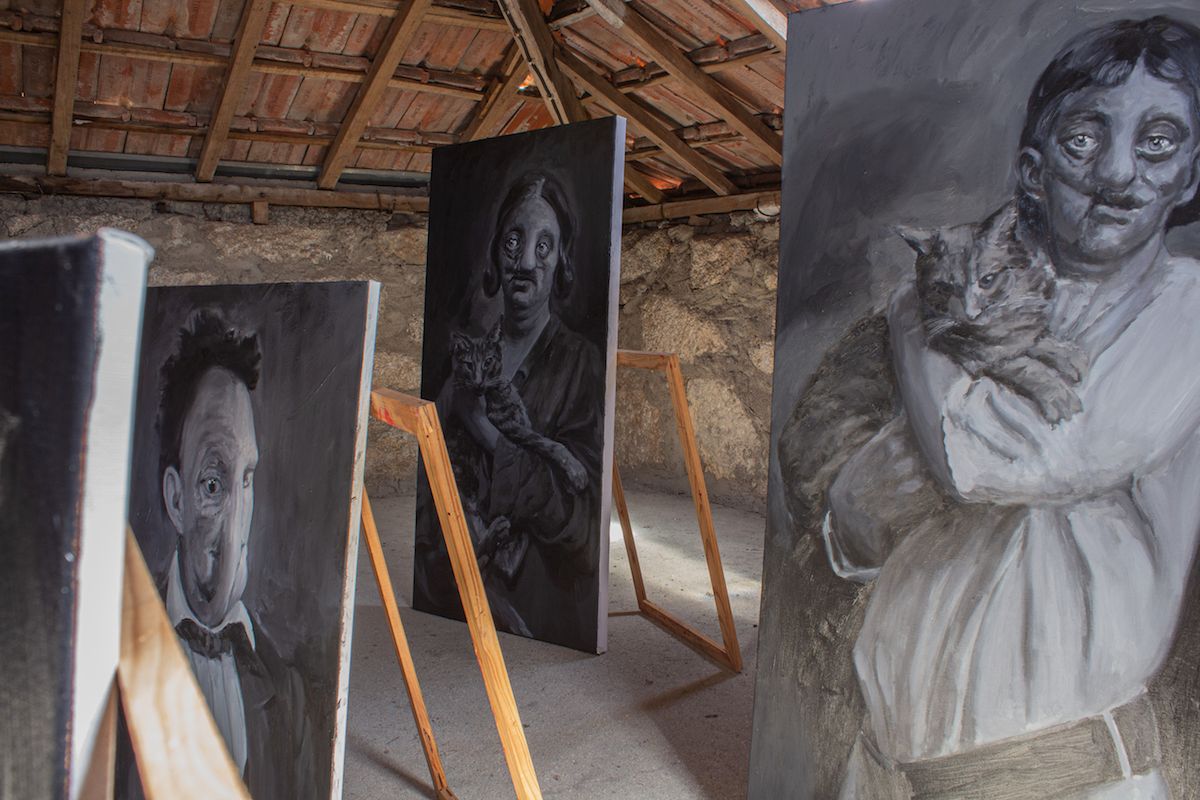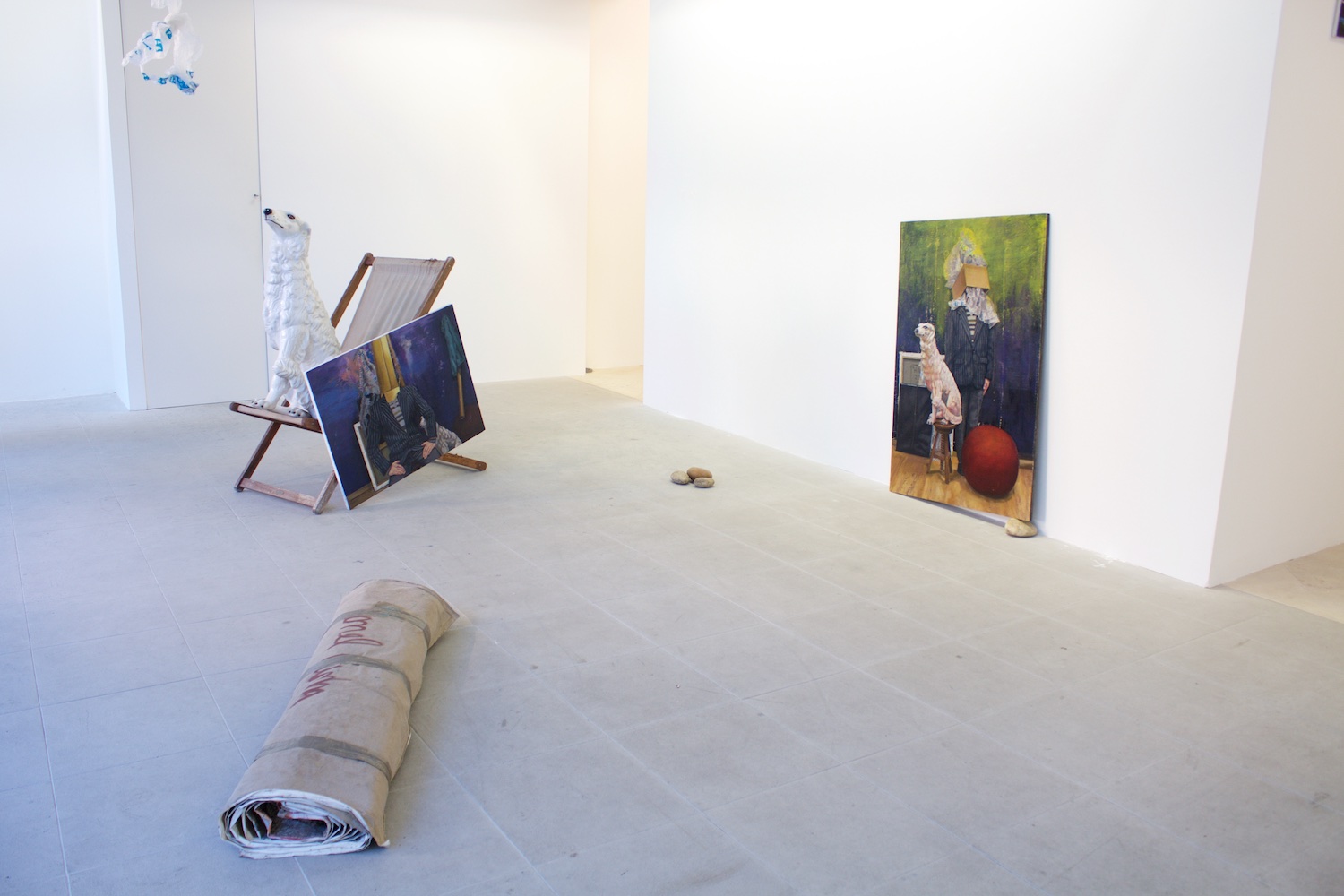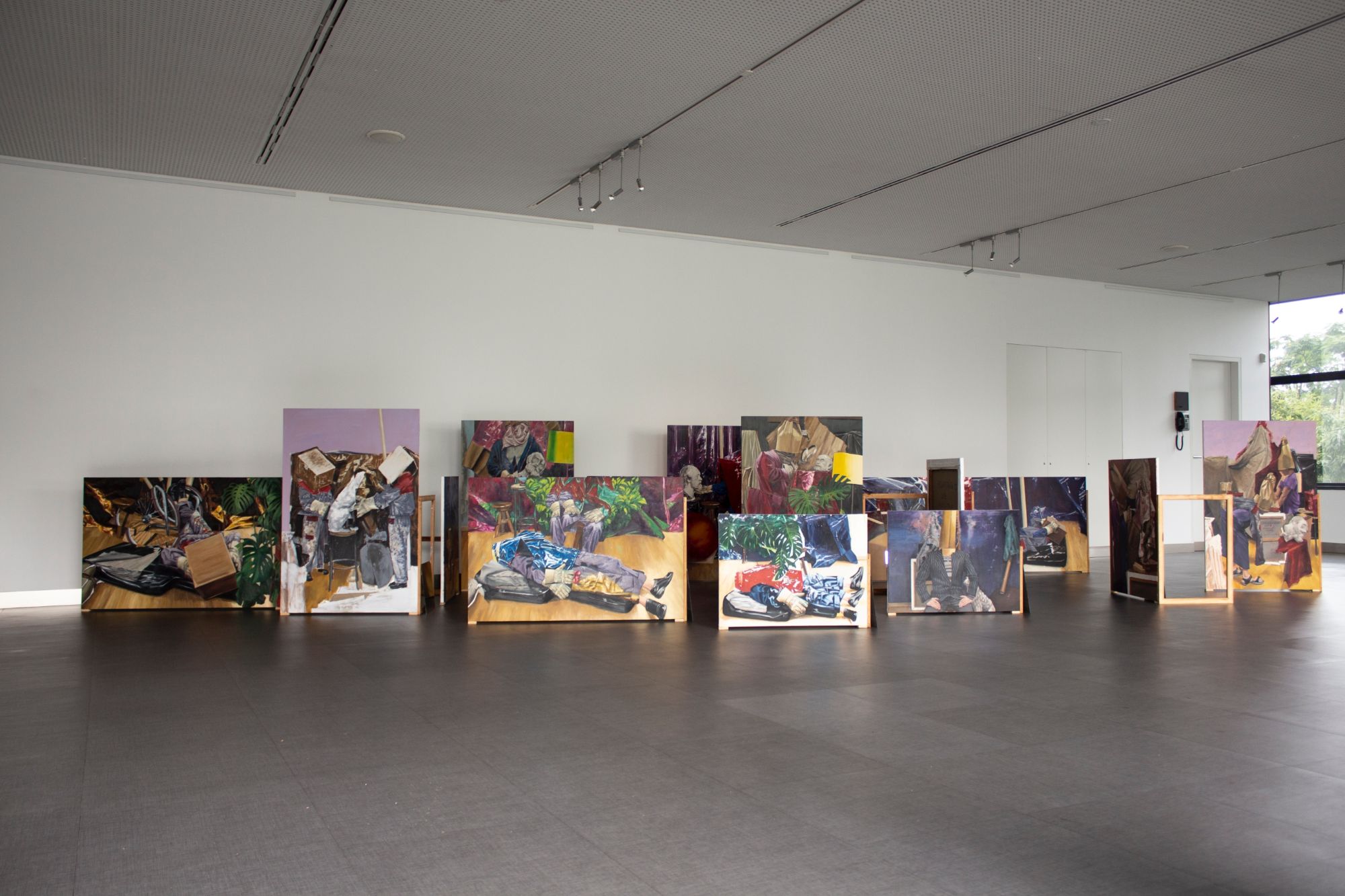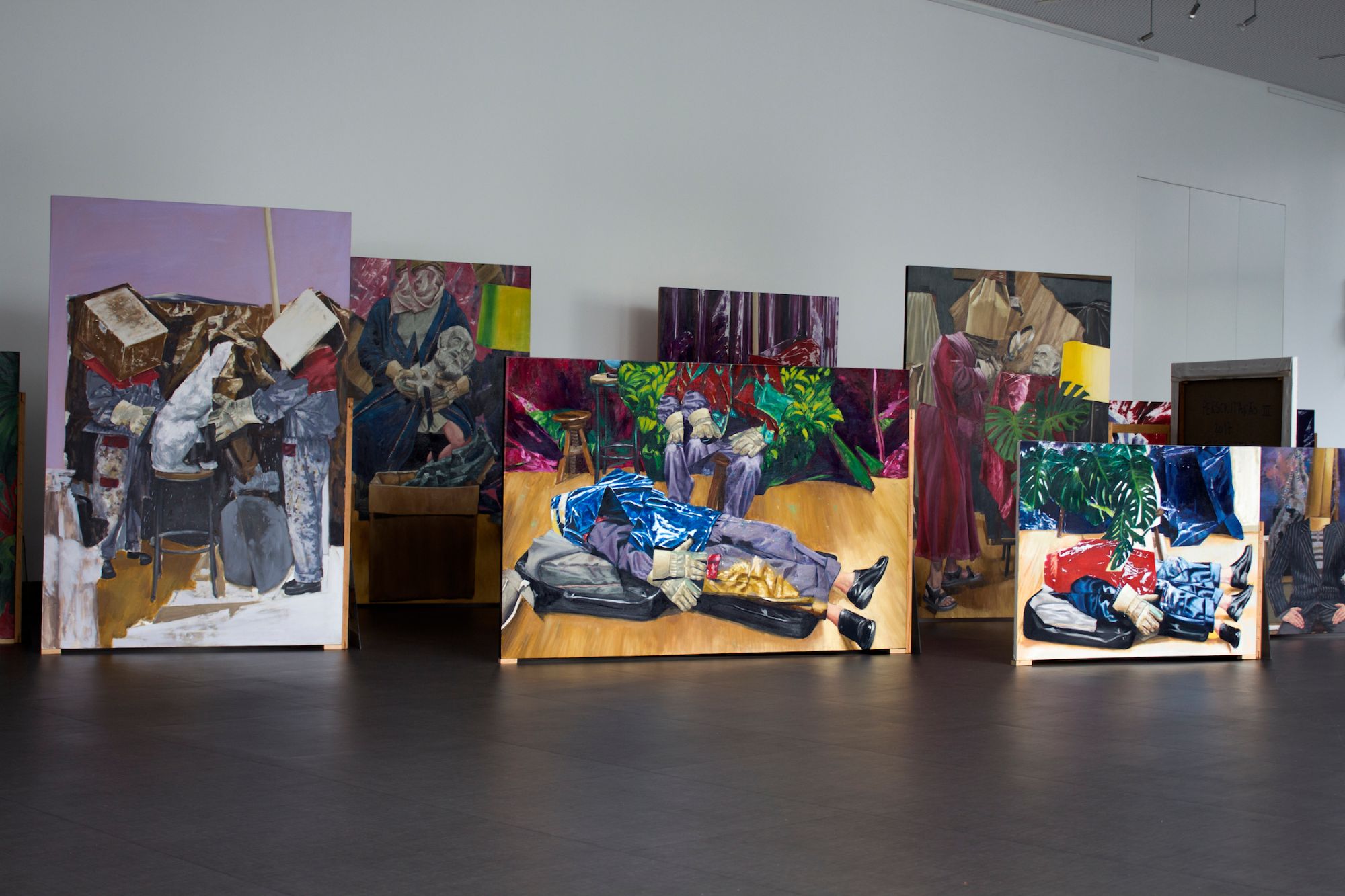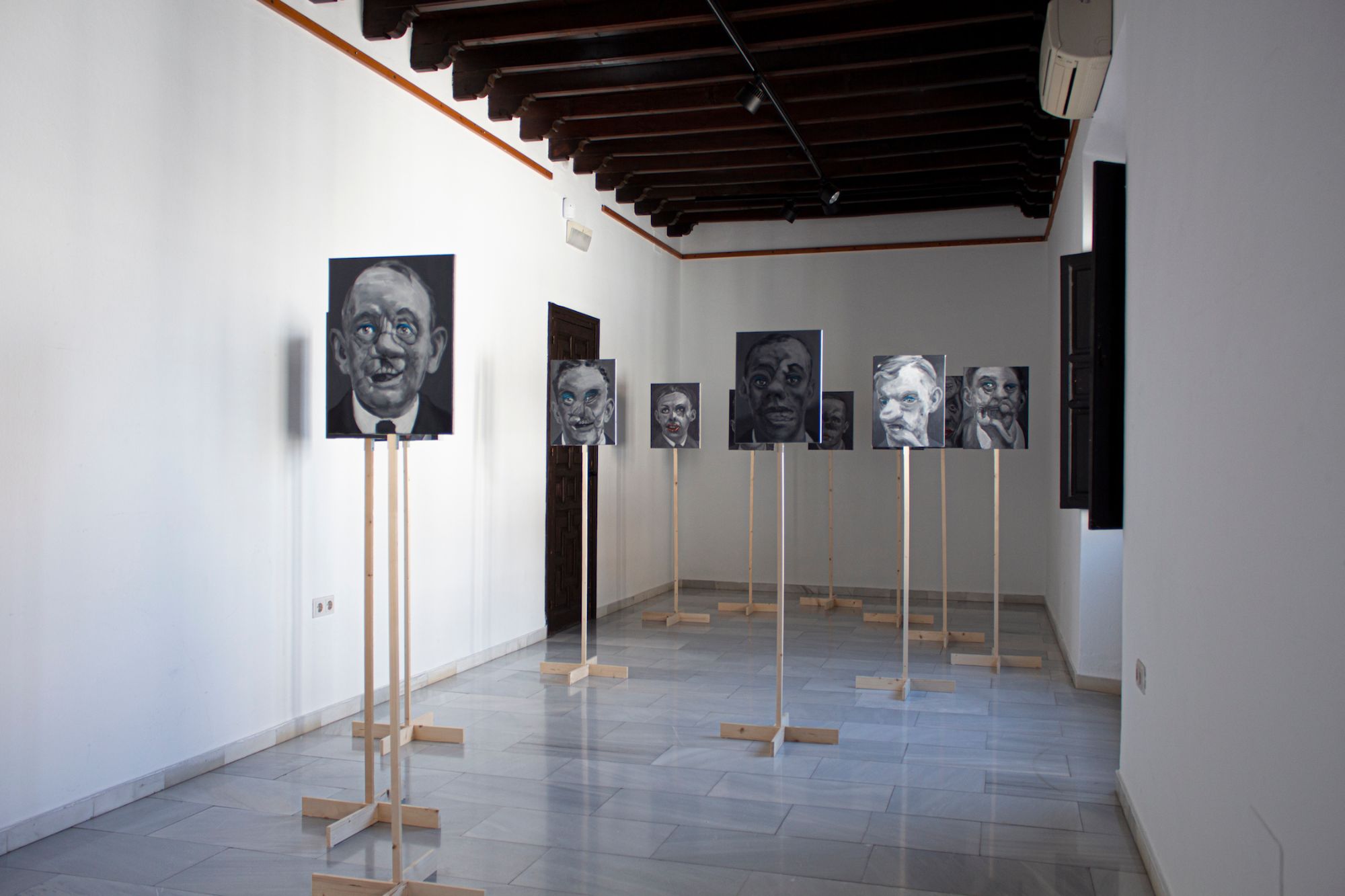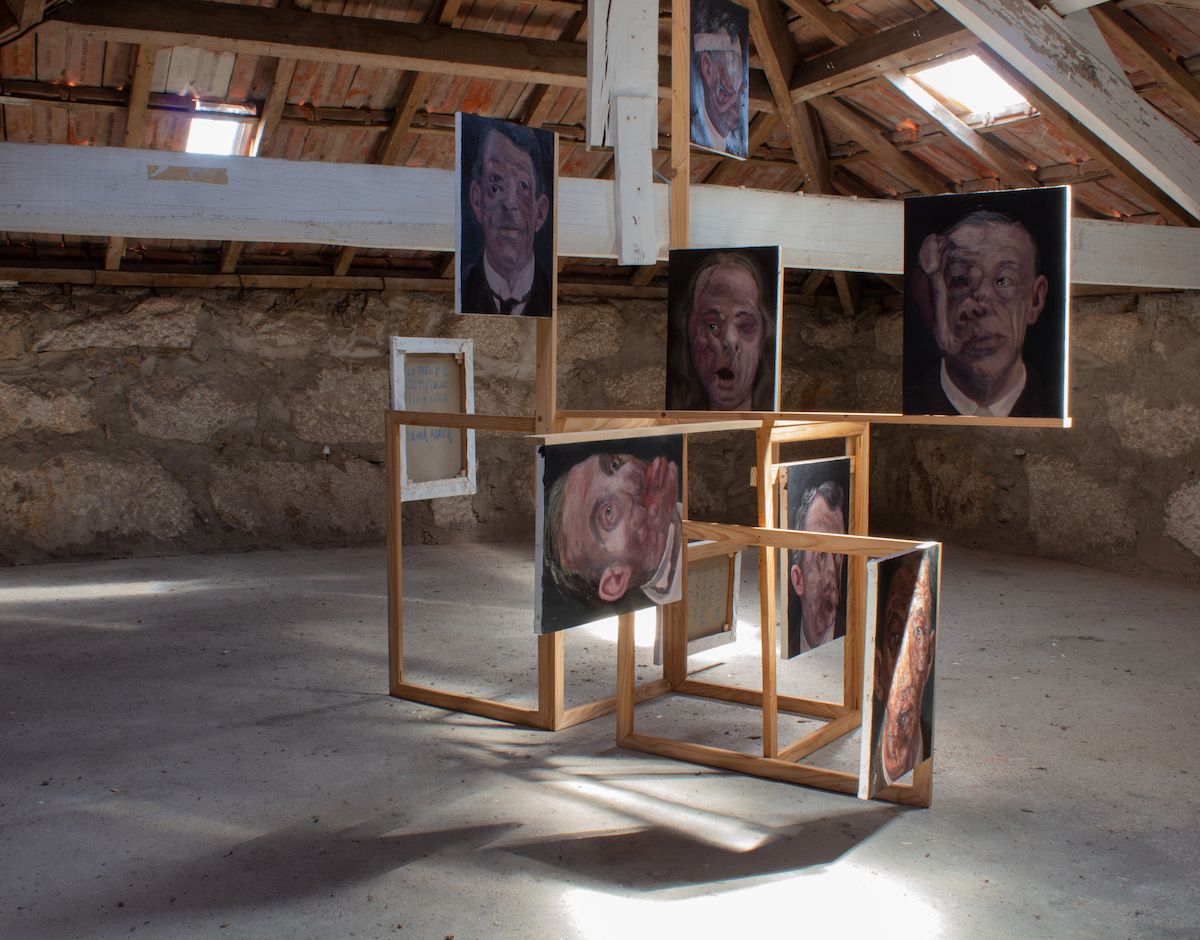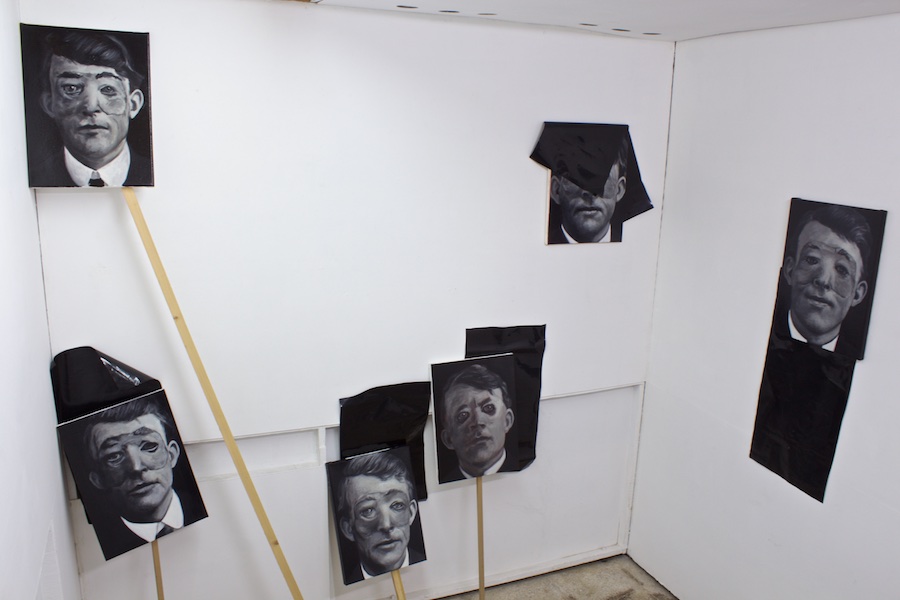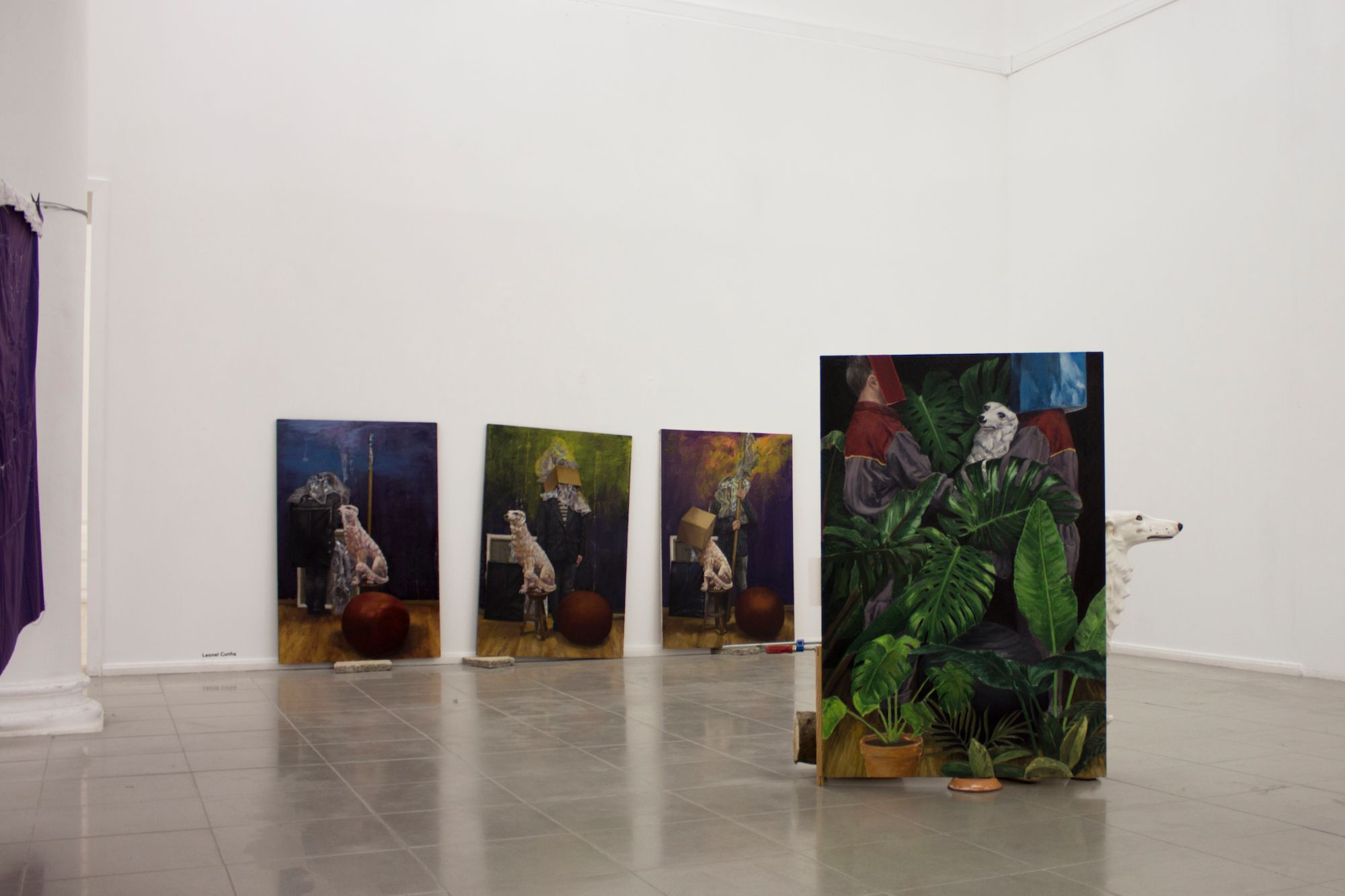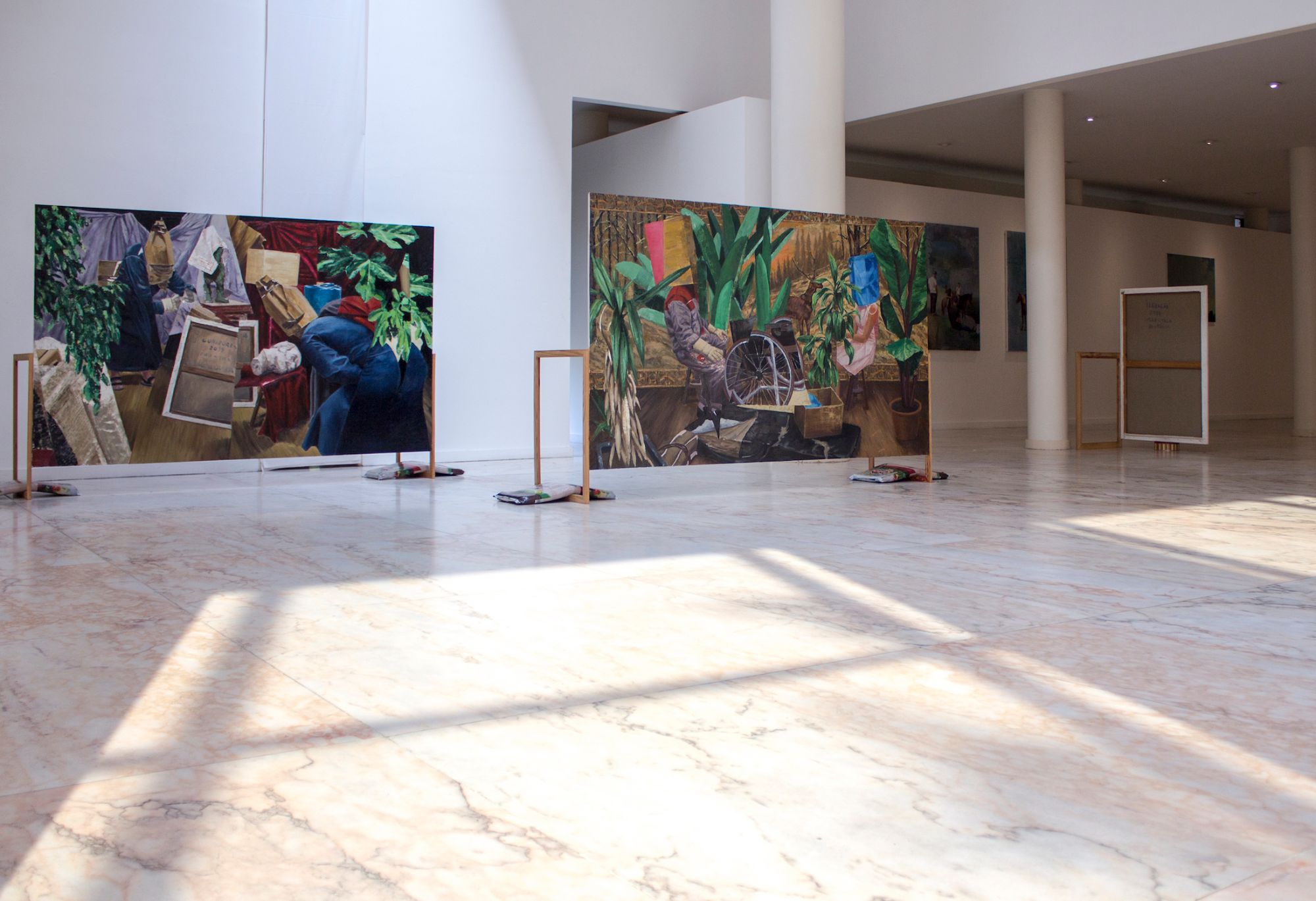In recent painting projects it has become particularly interesting for me to look at painting as a theatrical place, either through pictorial work on the surface, or in the staging of the pictorial object in the exhibition space, in other words, the scenic space. This scenic space of painting is the place of interaction with the viewer, which is determined by the elements of the painting and by the way the painting is installed in the exhibition space. The scenic elements in the painting can encourage figurative reading through the relationships with the external referent. By appointment, we can frame the forms observed in the painting, we can observe and relate the observed with reality: this is a woman, that is a face, there is a mattress, etc. However, the pictorial scenic space is also open to a less optical production regime, not establishing relationships between the figures, or making the nature of their relationships different, promoting the absence of a hegemonic code that governs the image and a effect of presence, of stage, which is more of the order of the sensible.
Painting as a pictorial body in space makes up the scenic space, now the place of interaction between work and spectator. Considering the exhibition space, we observe a) that the space has implications for the way in which the painting will be installed; b) that walking through space is crucial in the way one interacts with painting. Thus, we can consider the spectator as a flâneur, who wanders through the exhibition to experience it, feeling it and relating it to his body. The pictorial installation directs the viewer's attention and their performative navigation through space as a stage for pictorial objects.
The spectator also experiences a sense of absorption, of being embraced by a fictional world that creates another relationship of time and space. It can be theatrical and can involve the viewer in a more corporeal and dynamic way. The painting installations depend on the space where they are made, they are created specifically for these spaces, but, at the same time, the works that compose them can be seen individually and serve, elsewhere, in another exhibition.
Painting acquires another dimension, as an object given to site specific installations. But painting, as an object of installation in a scenic space, has another particularity, the ability to reuse it, in another context, in a new installation.
